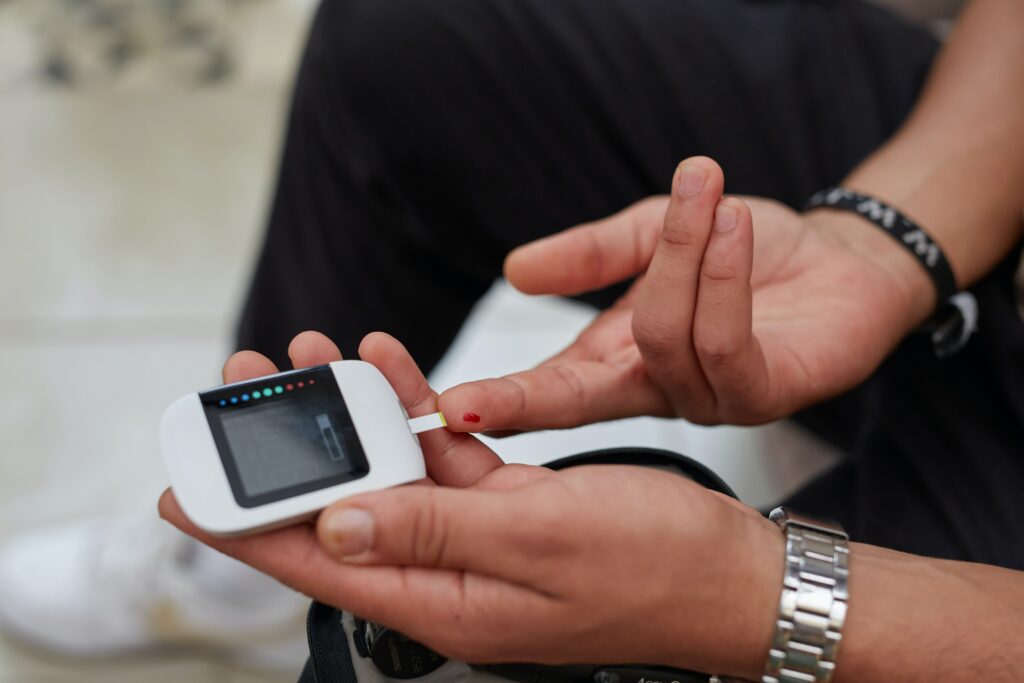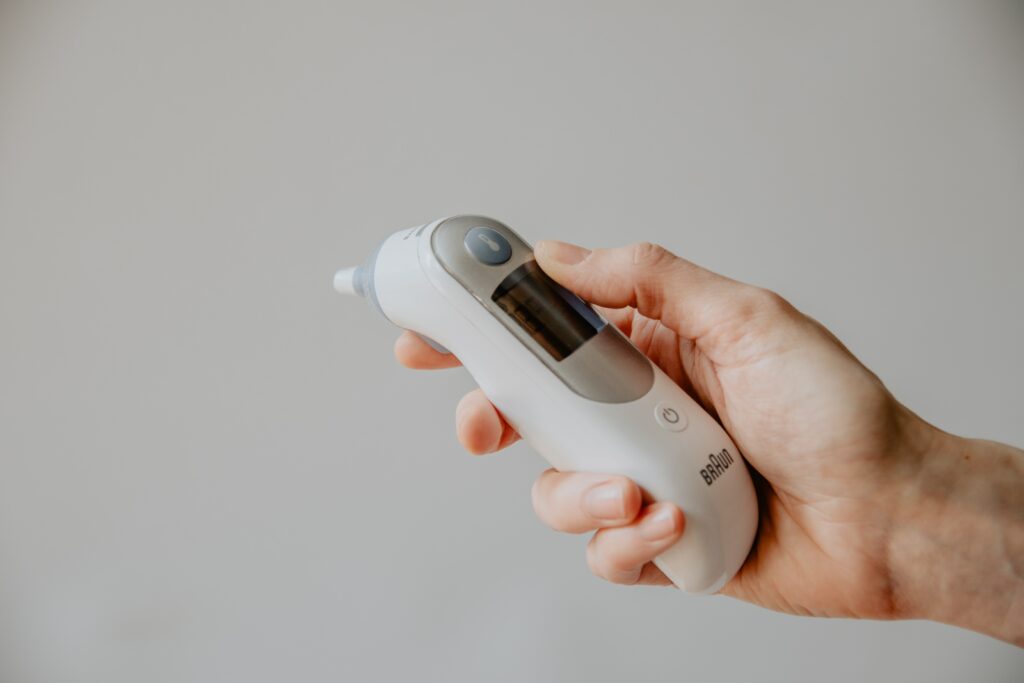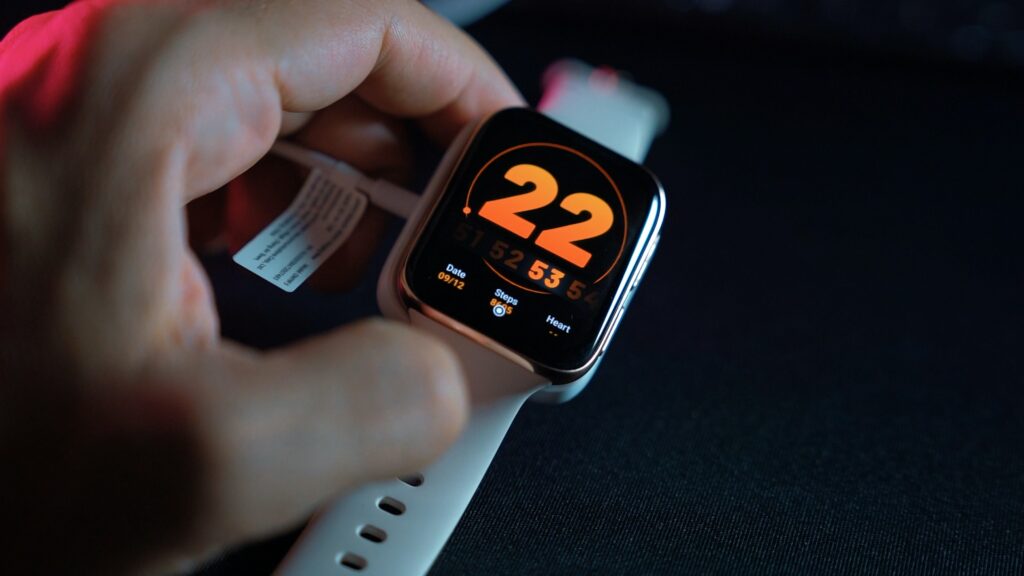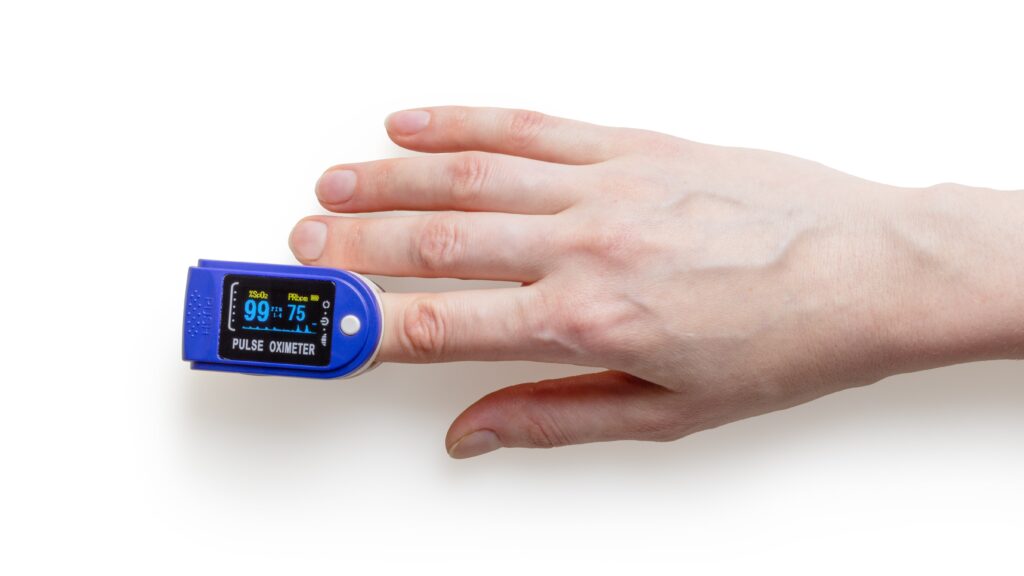Devices for monitoring one’s health are becoming rampant due to technological advancement. Recently, patients don’t need to go in and out of medical facilities to access their medical information, thanks to personal health monitoring devices.
With no need for needles, appointments, or intrusive procedures, these devices offer insight from gut health to heart health, blood glucose tracking, etc. This monitoring provides feedback in the form of numerical data and can reduce the risk of developing chronic diseases.
This blog post is a comprehensive guide to different personal health monitoring devices to help you be in control of your health and make healthy decisions for your overall well-being.

Image source: unsplash
What are personal health monitoring devices?
Personal health monitoring devices are devices that can be used to monitor one’s health. These devices help you monitor your body’s vital signs.
Understanding how your body functions and how your lifestyle affects your risk for illnesses is essential if you want to remain ahead of the curve with your health.
Doctors know that preventive health is the future of the medical field. Since many prevalent chronic diseases that affect the population can’t be cured, only managed.
This technique allows medical professionals to collect information from patients receiving care, whether at home or in the office, without them coming to the clinic. This involves the use of tools that track specific metrics in the body.
Some of them have network protocols that can transfer data sensors collected. This enables physicians to understand vital signs such as heart rate, oxygen saturation, weight, blood pressure, etc. This personal monitoring allows users to be in charge of their health.
Types of personal health monitoring devices
Personal health monitoring devices are of two types. They include the following;
i. Wearable devices
As the name indicates, you can wear these devices on your body. Wearable personal health monitoring devices can be jewelry pieces, a patch sewn onto your clothing, or even an implant placed within your body by a doctor.
Wearable personal health monitoring devices include fitness trackers, wearable ECGs, blood pressure monitors, wearable biosensors, and fall alarm pendants.
ii. Non-wearable devices
Personal health monitoring devices you cannot put on your body falls under this category. This includes gadgets like thermometers, smart scales, glucometers, pulse oximeters, etc.

Image source: unsplash
Different personal health monitoring devices
Here are various personal health monitoring devices that can help patients to be abreast of their health conditions.
a. Smartwatches

Image source: unsplash
Smartwatches have become popular over the past several years due to their convenience and functionality.
More than just telling the time, these gadgets can also track your fitness goals, deliver notifications to your smartphone, and even let you make calls and send messages from your wrist.
Tracking your fitness goals is one of the smartwatch’s most helpful features. Many models feature sensors that track your heart rate, steps taken, and burned calories. Using the smartphone app, you may establish daily objectives and monitor your development over time.
b. Blood pressure monitor

Image source: Unsplash
Regular blood pressure checks help people who have high blood pressure or who are at risk to identify patterns and changes in their readings.
This monitoring should be a regular part of your routine if you have high blood pressure or a medical condition like diabetes or renal issues that make it more likely that you will develop high blood pressure.
A blood pressure monitor can lead to an earlier diagnosis of high blood pressure and more successful treatment. This is because stress causes some people to get inconsistent readings in the doctor’s office. But taking personal readings provides a more accurate picture of heart health.
It can also be used to spot changes caused by medications. Patients who have their personal blood pressure monitor are more likely to make healthier choices daily since they are constantly reminded of it.
c. Glucometer

Image source: Unsplash
A glucometer is another personal health monitoring device that is very necessary. With a blood glucose meter, a portable electronic gadget that measures the glucose level in a tiny drop of blood, you may monitor your blood sugar levels at home.
The glucose test is an easy and simple procedure but important to monitor the body’s sugar levels and start a routine to address any potential sugar issues.
With this device, you can always keep an eye on your glucose levels, thereby helping to prevent diabetes or treat it. This is a crucial step in treating your diabetes and preventing any complications.
d. Thermometer

Image source: Unsplash
The thermometer is used to measure the body’s temperature. Having a personal one at home is quite useful. Knowing whether someone has a fever with accuracy provides you with crucial information regarding the next measures for their care.
It provides a quick and precise reading of the patient’s body temperature. It is a must-have for individuals and moms with kids, as they can decipher the issue and consult a doctor.
e. Electrocardiogram (ECG)
The heart is a fascinating organ that pumps blood to various body organs. However, occasionally, abnormalities like an irregular heartbeat or arrhythmia may arise. And if they are not quickly identified, they could cause serious health complications.
This is where owning an ECG device comes in, as it allows you to do tests at your convenience. The ECG is a non-invasive diagnostic instrument that uses electrodes placed on your chest to detect the electrical activity of your heart.
It can determine potential stroke or heart attack risks, find any underlying cardiac disorders, including coronary artery disease, and find irregular heart rate and rhythm irregularities.
People with risk factors, like high blood pressure, cholesterol, and diabetes, and those with a family history of cardiovascular disease, are advised to regularly perform the test.
Also, due to their increased risk of developing heart problems, athletes and anyone undergoing rigorous physical training should get regular ECG examinations.
Regular ECG monitoring helps preserve general health by enabling the early detection and treatment of any potential complication brought on by heart-related conditions.

Image source: Unsplash
f. Smart scales
Innovative smart weighing scales are giving home healthcare monitoring a new dimension. The scales can examine health parameters to give users more accurate measures to better understand their bodies.
This is done by gathering data using sensors and proprietary technologies while people step on them. The fact that smart scales measure more indicators than only weight is an important advantage over conventional scales.
Compared to a standard scale, a smart scale offers more detailed health information, such as body mass index (BMI), body fat percentage, muscle mass, etc.
It is a helpful tool for achieving your health and fitness goals because it can sync with fitness apps to track your progress.
g. Pulse oximeter

Image source: unsplash
Our red blood cells’ main job is to efficiently transfer nutrients and oxygen molecules throughout the body so that each cell can remain alive. As a result, when a person has hypoxemia and their blood oxygen levels begin to decline, negative consequences follow.
Therefore, pulse oximeters monitor blood oxygen saturation and assess pulse rate. For people with a cardiovascular or respiratory health condition requiring constant monitoring, having one close by may be essential to maintaining normal blood oxygen levels.
Your doctor might suggest buying a pulse oximeter to monitor your oxygen levels accurately and change your lifestyle if necessary. This can help boost the quantity of oxygen in the bloodstream and lessen any complications.
h. Smart beds
You’ve probably heard that removing your device is better if you want to get a good night’s rest. With that in mind, relying on technology for a good night’s sleep can seem strange. However, you can sleep better if you monitor your sleep patterns and gain insight from the data.
Smart beds have sensors that monitor the quantity and quality of their sleep, temperature control, position control, and stiffness adjustment. Some even go as far as gently raising your head to prevent snoring.
Personal health monitoring devices such as smart beds measure your sleep statistics to detect underlying health issues.
i. Smart jewelry
Jewelry comes in different forms. It could be a ring, bracelet, wristband, necklace, etc. The smart ring, for example, is currently the most well-known type of smart jewelry.
Jewelry brands have already introduced smart rings that can monitor a user’s health information and then be accessed on a smartphone.
Well-known fashion companies are creating additional fashionable jewelry options, including bangles and bracelets.
j. Smart clothing
A European team has integrated sensing devices directly into fabrics, creating clothing that is not only smart but also comfortable to wear.
In contrast to health monitoring systems that depend on sensors worn on the arm etc., the new approach directly embeds sensing devices into textiles.
Smart clothes can offer more accurate perceptions using numerous body sensors instead of smaller wearables.
There are smart shirts that can diagnose respiratory illnesses and smart shoes that can track a runner’s strides. This also includes smart swimwear that tells the user when to apply sunscreen, smart pants that vibrate for sudden yoga sessions, and smart shoes that may detect foot ulcers.
i. Stethoscope

Image source: Unsplash
You probably expect to say a smartwatch for heart rate monitoring. Health-monitoring smartwatches are good, but a stethoscope is better. This is because they have limited data collection capabilities.
Every home should have a stethoscope, and everyone should know how to use it to listen for clear lungs, monitor heartbeats, and listen to unusual sounds associated with the heart, lungs, and stomach.
And the best part is that they won’t share your data with any third party. It is, therefore, a very useful item to have in your home medical kit.
Benefits of personal health monitoring devices
Health is wealth. The importance of personal health monitoring devices cannot be over-emphasized. Below are some of the benefits of using these devices.
1. Ease of use
One of the best advantages of these personal health monitoring devices is that most of them are easy to use and understand. Whether it’s a smartwatch etc., they provide valuable information at their fingertips. And they do not cause any discomfort when being worn.
2. Capture and save accurate health data
Due to technological advancement, these devices have improved accuracy. They can gather accurate health information.
Also, most of these devices can be connected to smartphone apps and save data on devices with cloud backups. This indicates that you can obtain comprehensive histories of data collected by devices by logging into your accounts.
3. Check data in real-time
Personal health monitoring devices give access to health data in real time. Knowing how far you’ve come on a walk, run, bike ride, or swim can make you feel accomplished, motivate you more, and help you organize the rest of your activity.
While past data can influence your long-term objectives, you can use current data to guide your short-term actions.
4. Track data over time
One of the key benefits of using personal health monitoring devices is the ability to compare data for weeks, months, or years.
As soon as you start using a device, you can start building a record of past data for use in analytics. The ease of using this data and have a comprehensive record can help you in using personal monitoring devices over time.
e. Record multiple types of data
These health monitoring devices can track multiple types of data. For example, a device can monitor your exercise and heart rate, while some are tailored for specific measurements.
Depending on your priorities and lifestyle, you need to decide on the health data that will be most helpful. You could use a basic device to track your heart rate, count your steps, or choose a smartwatch with the most sophisticated monitoring features.
Conclusion
Personal health monitoring devices are very useful in ensuring people are more in control of their health. Close monitoring leads to the prevention of many diseases and fewer trips to the emergency room.
It ensures that doctors have your health data gathered over time which is useful in formulating a treatment plan.
Personal health monitoring devices enable you to live freely and guarantee a higher quality of life while assisting doctors and family members in monitoring your health.
- Manual vs. Automated Cleaning Equipment: Which Should You Choose? - December 15, 2023
- Cost Efficiency of Investing in Professional Cleaning Equipment - December 8, 2023
- Safety Precautions When Using Professional Cleaning Equipment - November 26, 2023
